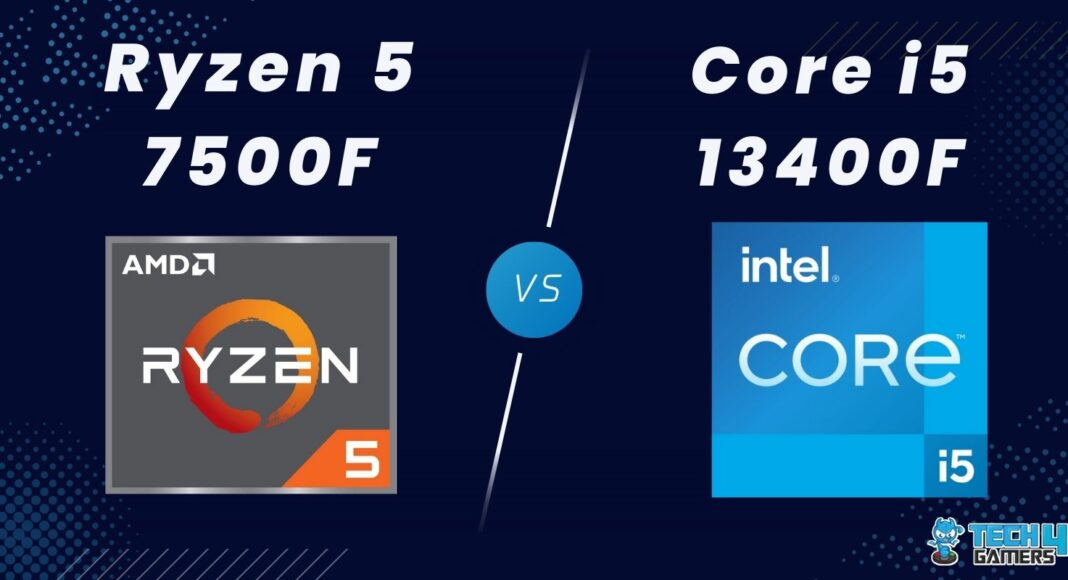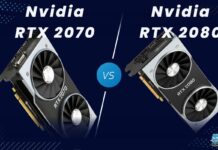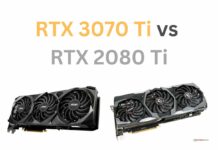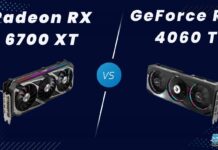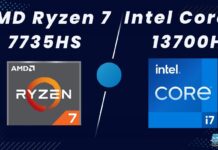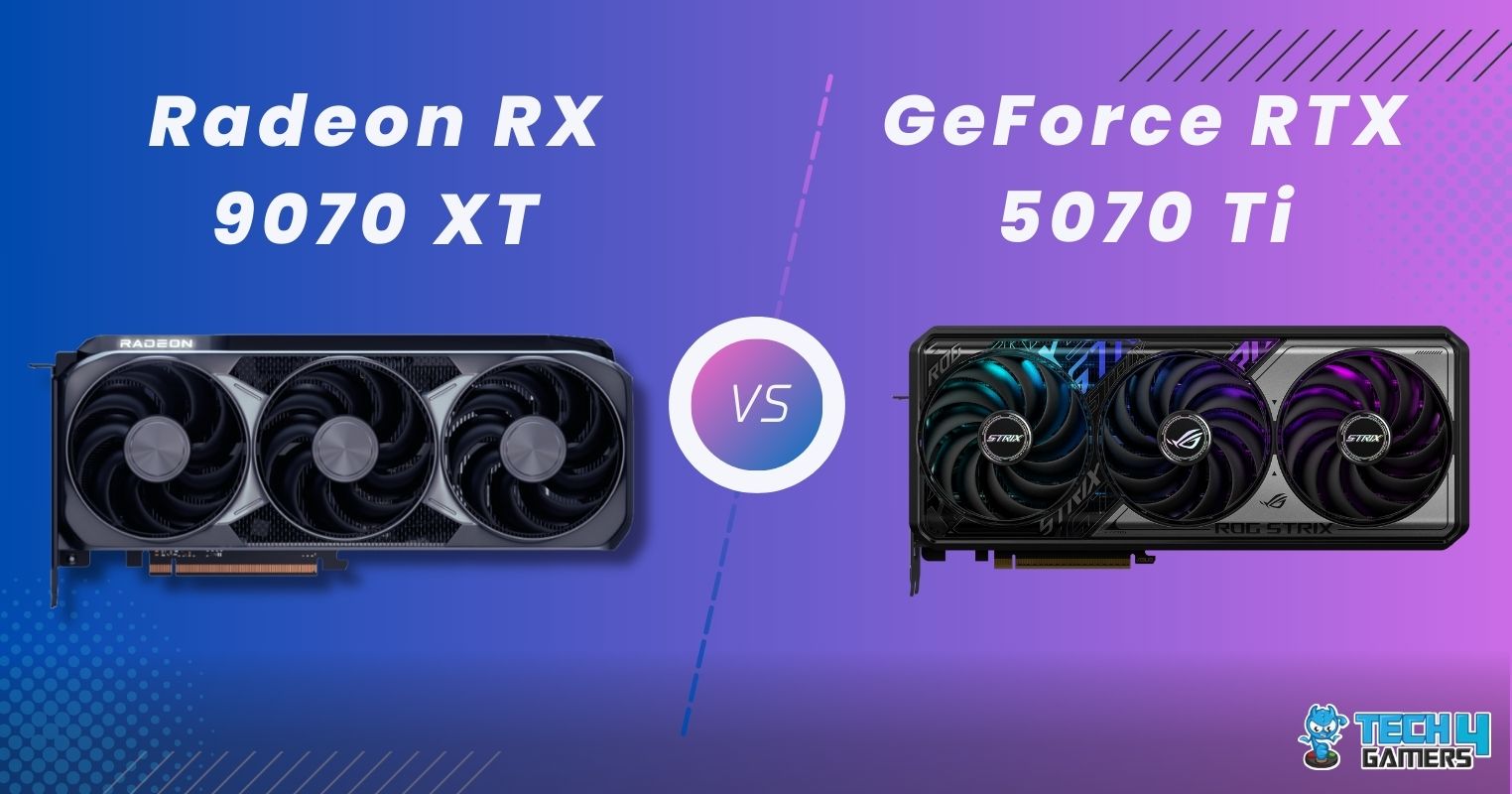Intel Core i5 13400F
Rated: 8.5/10
AMD Ryzen 5 7500F
Rated: 8.7/10
Pros And Cons
| CPU | Pros | Cons |
|---|---|---|
| Core i5 13400F | ✅High Core count ✅DDR5 Support | ❌Locked multiplier ❌No integrated graphics |
| Ryzen 5 7500F | ✅Unlocked multiplier ✅Hardware visualization | ❌High Power consumption ❌No integrated graphics |
- Asserting its claim to the performance realm, the Ryzen 5 7500F surges ahead with a decisive 5.7% advantage in frame rates over the Core i5 13400F.
- The Core i5 13400F outperforms the Ryzen 5 7500F in terms of power efficiency, surprising analysts with a 29.8% drop in energy usage.
- The Ryzen 5 7500F outperformed the Core i5 13400F by an astonishing 20.3% as the Core i5 13400F gracefully enters the world of temperature regulation.
- The Ryzen 5 7500F enters the market at $179, while the Core i5 13400F ranges from $196.
Comparison Table
| Processor | Intel Core i5 13400F | AMD Ryzen 5 7500F |
|---|---|---|
| Architecture | Raptor lake | Zen 4 (Raphael) |
| Bus Frequency | 100 MHz | 100 MHz |
| Turbo Clock | up to 4.6 GHz | up to 5 GHz |
| Integrated GPU | No | No |
| Multiplier | 25x | 37x |
| Max. Operating Temperature | 100°C | 95°C |
Architectural Differences
- Process Size: The Ryzen 5 7500F boasts a cutting-edge 5nm design, while the Core i5 13400F shines with its impressive 10nm manufacturing.
- Clock Speeds: Speaking of clock rates, the Core i5 13400F easily overcomes obstacles, rising from a 2.5 GHz base frequency to a stunning high of 4.6 GHz.
- Frequency: The Ryzen 5 7500F is unfazed and maintains its position by increasing its speeds from 3.7 GHz to an astounding crescendo of 5 GHz.
- Cores and Threads: The Ryzen 5 7500F attracts with its rapid combination of 6 cores and 12 threads, while the Core i5 13400F displays 10 cores and 16 threads.
- Memory Support: The Core i5 13400F embraces the harmony of DDR4-3200 and DDR5-4800. The Ryzen 5 7500F, on the other hand, adopts DDR5-5200.
- TDP: The Ryzen 5 7500F and Core i5 13400F coexist at 65 Watts, maintaining stability in the thermal environment.
We aim to explore their performance as we begin the Ryzen 5 7500F vs Core i5 13400F exciting encounter. We aim to identify the ultimate winner who reflects the peak of knowledge through a precisely planned series of evaluations.
Gaming Performance Benchmarks
Let’s now explore the details of the requirements after laying the groundwork for them. Our goal is to demonstrate the wide range of performance potential built into these CPUs in the exciting world of modern gaming.
Testing Rig
- Operating System: Windows 10 Pro
- GPU: ZOTAC RTX 2070 Amp Extreme Edition
- RAM 1: T-Force NightHawk RGB DDR4 3200MHz
- RAM 2: XPG Lancer RGB 6000 MHz DDR5
- Motherboard 1: MSI MEG Z790 ACE MAX Motherboard
- Motherboard 2: ASRock B650E PG-ITX WIFI Motherboard
- Power Supply: ENERMAX REVOLUTION D.F. X 1050W
- CPU Cooler: be quiet! Dark Rock Pro 4
- Storage: XPG GAMMIX S70 BLADE 2TB NVMe SSD
Cyberpunk 2077

- During my Cyberpunk 2077 session, the Ryzen 5 7500F had an excellent 102 FPS, outperforming the Core i5 13400F’s performance, which hits 97 FPS.
- The Ryzen 5 7500F with a frame rate of 73 FPS, outperforms the Core i5 13400F and maintains its composure with 1% lows, clocking in at a constant 78 FPS.
Hitman 3
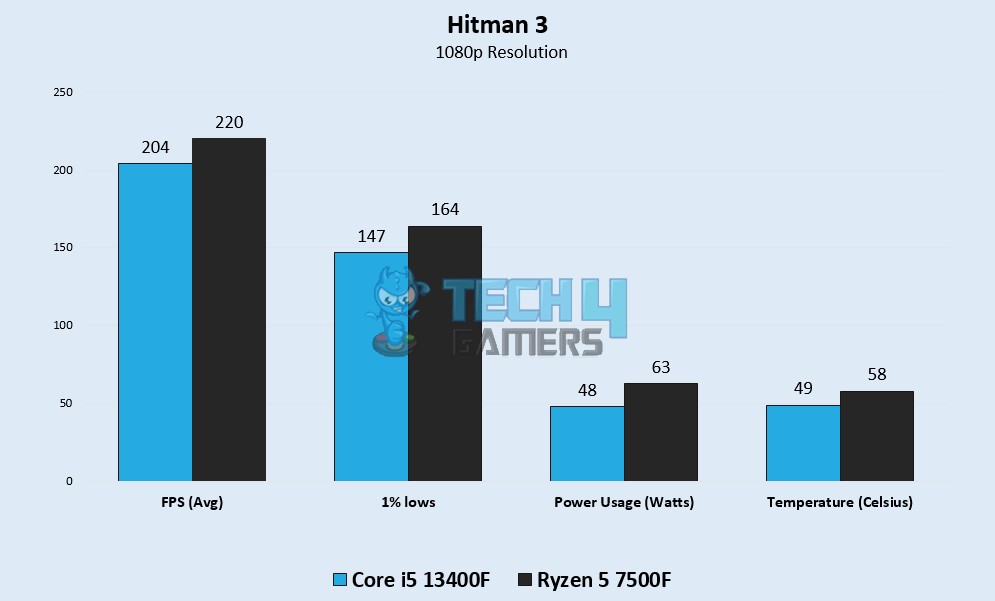
- In my session of Hitman 3, the Core i5 13400F hits 204 FPS, but the Ryzen 5 7500F boldly steps in, delivering a stunning 220 FPS.
- The Ryzen 5 7500F skillfully outperforms the Core i5 13400F’s performance of 147 FPS and displays unwavering strength with 1% lows that are firmly set at 164 FPS.
GTA V
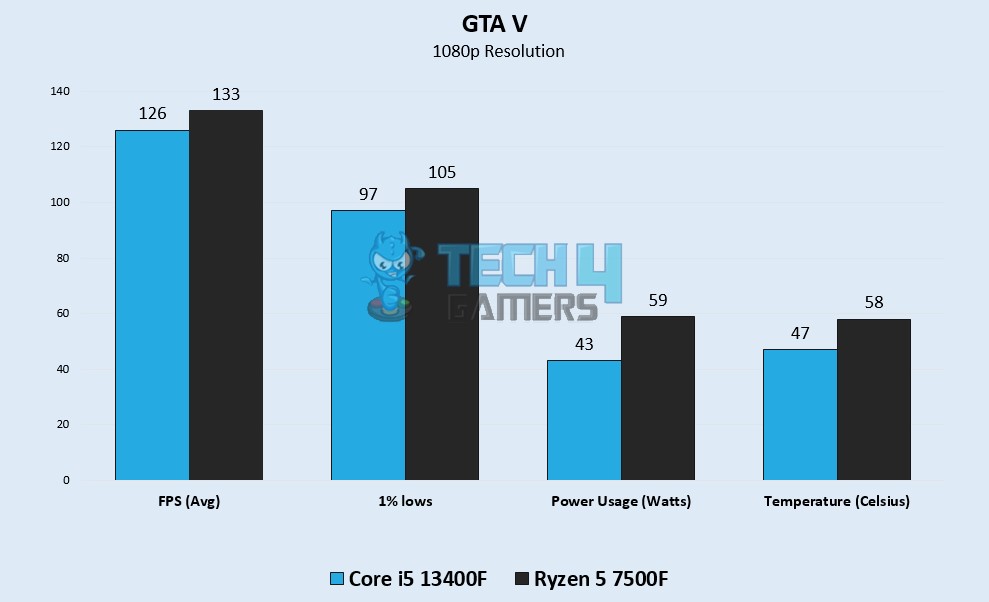
- In my GTA V gameplay, the Ryzen 5 7500F astounds everyone with a fantastic 133 FPS, demonstrating an improvement over the Core i5 13400F’s performance of 126 FPS.
- The Ryzen 5 7500F leaves an indelible mark by achieving 1% lows at a mind-blowing 105 FPS. This outperforms the Core i5 13400F’s 97 FPS and emits a sense of calm assurance.
Marvel’s Spider-Man
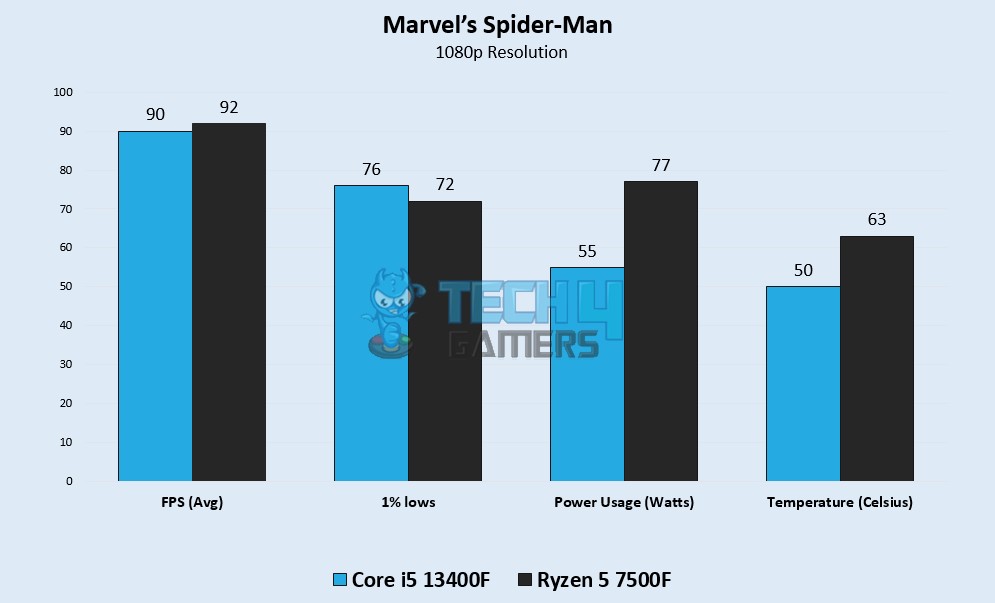
- The Ryzen 5 7500F commands attention, displaying its 92 FPS, far outperforming the Core i5 13400F’s result of 90 FPS.
- The Core i5 13400F outperforms the Ryzen 5 7500F’s 72 FPS performance with an outstanding 76 FPS at 1% lows.
The Last Of Us Part 1
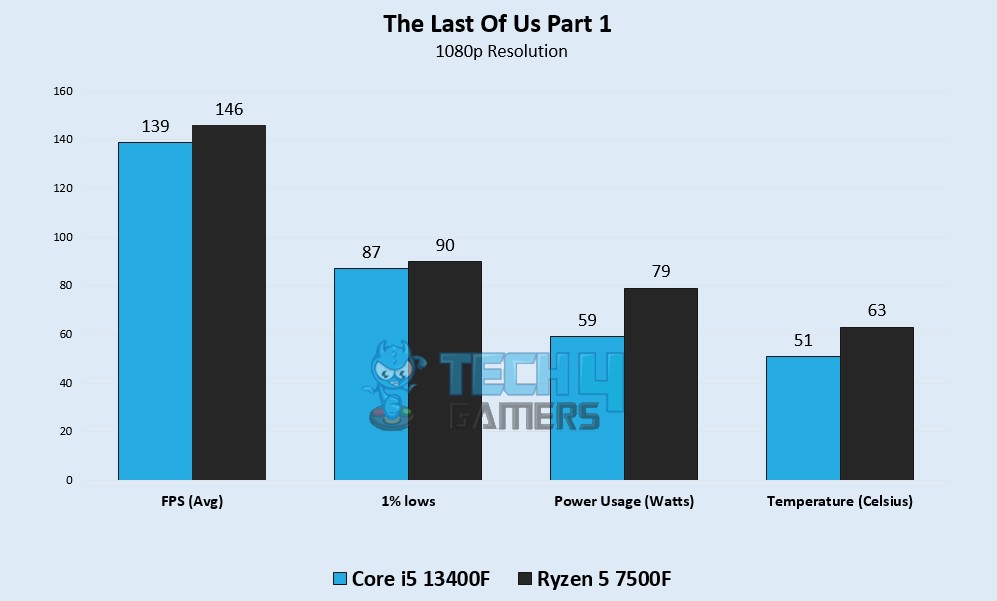
- The Ryzen 5 7500F effortlessly breaks the previous standard set by the Core i5 13400F’s 139 FPS. The Ryzen 5 7500F raises the frame rate to an astounding 146 FPS.
- The Core i5 13400F maintains its calm with a stable 1% low performance at 87 FPS, while the Ryzen 5 7500F enters the stage with a 90 FPS.
Microsoft Flight Simulator
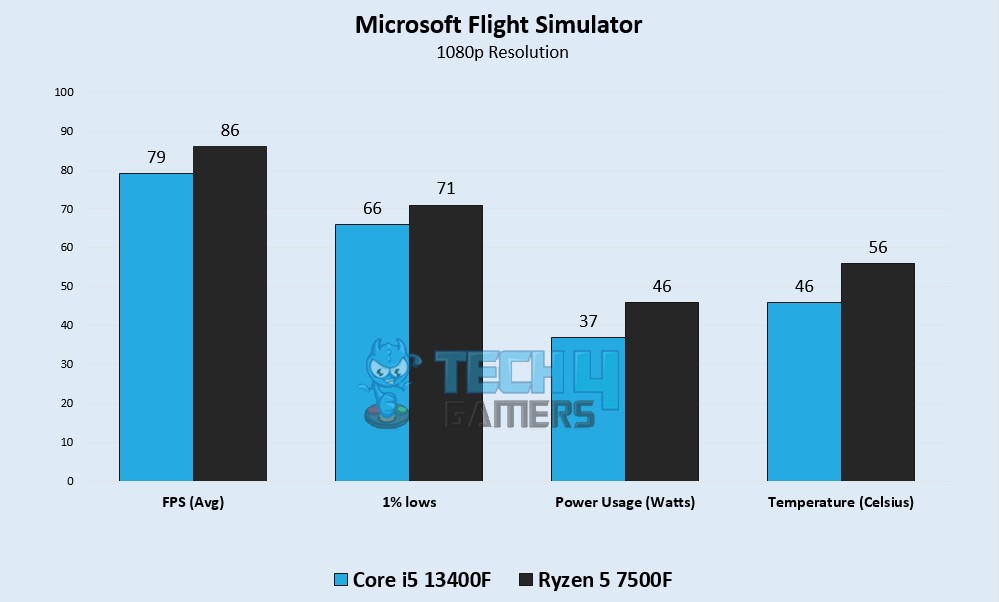
- While playing the Microsoft Flight Simulator the Ryzen 5 7500F gives 86 FPS. This performance outperforms the Core i5 13400F’s 79 FPS.
- The Ryzen 5 7500F boasts a solid 71 FPS performance in 1% lows, while the Core i5 13400F impresses with a 66 FPS.
Overall Gaming Analysis
| Featured | Ryzen 5 7500F | Core i5 13400F |
|---|---|---|
| Average FPS | 96.67📈 | 91📈 |
| %1 lows | 129.83📉 | 122.5📉 |
| Winner: AMD's Ryzen 5 7500F | ||
The Ryzen 5 7500F dominates our benchmark competition, outperforming the Core i5 13400F’s average performance of 122.55 FPS with an astounding average of 129.6 FPS. The Ryzen 5 7500F emerges with an outstanding 96.6 FPS of 1% lows, while the Core i5 13400F keeps its cool, maintaining an average frame rate of 91 FPS.
Thermal Efficiency
| Featured | Ryzen 5 7500F (°C) | Core i5 13400F (°C) |
|---|---|---|
| Average Temperature | 59.67🌡️ | 48.67🌡️ |
| Winner: Intel's Core i5 13400F | ||
The Core i5 13400F displays its cooling expertise by skillfully maintaining a cooler position at 48.6°C, outperforming the Ryzen 5 7500F by a considerable 20.3%. It performs better in our tests and achieves an arrangement of thermal equilibrium while outperforming the latter’s 59.6°C average temperature.
Power Consumption
| Featured | Ryzen 5 7500F (W) | Core i5 13400F (W) |
|---|---|---|
| Average Power Consumption | 66.67⚡️ | 49.33⚡️ |
| Winner: Intel's Core i5 13400F | ||
The Ryzen 5 7500F has an average power drain in the energy consumption category of 66.6 W. The Core i5 13400F, in comparison, demonstrates skillful energy management by sparingly consuming an average of 49.3 W, representing a noteworthy 29.8% decrease in power utilization.
Pricing And Availability
| CPU | MSRP | Current Price |
|---|---|---|
| Core i5 13400F | 💲196 | 💲169 |
| Ryzen 5 7500F | 💲179 | 💲159 |
| Difference | 9.4% | 6.2% |
The Core i5 13400F enters the limelight and grabs attention with its price range of $169 to $200. While the Ryzen 5 7500F is an ideal mix of performance and affordability with a price range between $159 and $179.
Final Verdict – What We Recommend?
Ryzen 5 7500F: The Ryzen 5 7500F emerges as a standout choice, showcasing a remarkable 5.7% advantage in frame rates over the Core i5 13400F, having its dominance in performance. Despite its slightly higher average temperature, the Ryzen 5 7500F provides exceptional gaming experiences and impressive stability in demanding gaming scenarios.
Core i5 13400F: The Core i5 13400F offers commendable power efficiency, with a 29.8% drop in energy usage compared to the Ryzen 5 7500F. Its architectural prowess, featuring a dynamic clock speed boost up to 4.6 GHz and support for DDR4-3200 and DDR5-4800 memory, positions it as a formidable contender in the CPU market.
The Ryzen 5 7500F excels in gaming performance and stability, making it an ideal choice for gamers seeking top-notch performance. On the other hand, the Core i5 13400F shines in power efficiency, ideal for users prioritizing energy savings and multitasking capabilities.
Frequently Asked Questions
The AMD Ryzen 5 7500F’s faster clock rates and strong multi-threading capabilities may be advantageous for content creation jobs. However, the performance per thread and potent single-thread performance of the Core i5-13400F may also provide comparable results.
The Intel Core i5-13400F’s multiplier is locked, which restricts how much it can be overclocked. Conversely, the AMD Ryzen 5 7500F has an unlocked multiplier, making overclocking simple and adaptable.
Due to their multiple-core and multiple-thread architectures, both CPUs have powerful virtualization and multitasking capabilities. Your choice may also be influenced by the Ryzen 5 7500F’s unlocked multiplier for overclocking and the Core i5-13400F’s capabilities for hardware virtualization.
More from the Ryzen 5 7500F
More from the Core i5 13400F
Thank you! Please share your positive feedback. 🔋
How could we improve this post? Please Help us. 😔
[Comparisons Expert]
Abdemanaf is a skilled creative writer who has been honing his craft since 2011. While initially working in different fields, he found a passion for technology and has been exploring the tech world since early 2015. Over the years, he has developed an in-depth knowledge of the latest tech trends and product offerings by various companies.
Abdemanaf’s writing reflects his analytical mindset and ability to think critically. He has a knack for breaking down complex technical information into easily digestible pieces, making his articles engaging and accessible to readers from all backgrounds. In February 2022, he joined Tech4Gamers as a blog and product comparison writer, where he has been able to hone his skills further.
As a writer, Abdemanaf is dedicated to staying up-to-date with the latest technological advancements and trends, enabling him to provide readers with the most relevant and accurate information. He is always eager to learn more and is constantly seeking new challenges to improve his skills.
Get In Touch: manaf@tech4gamers.com


